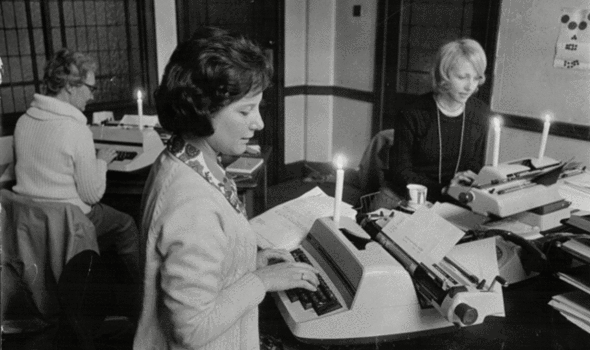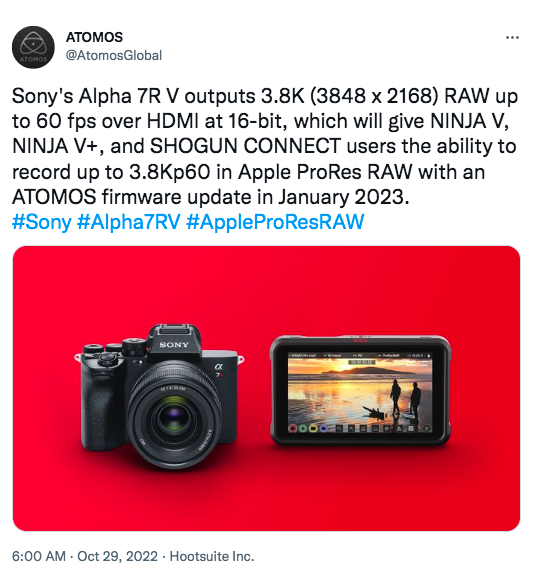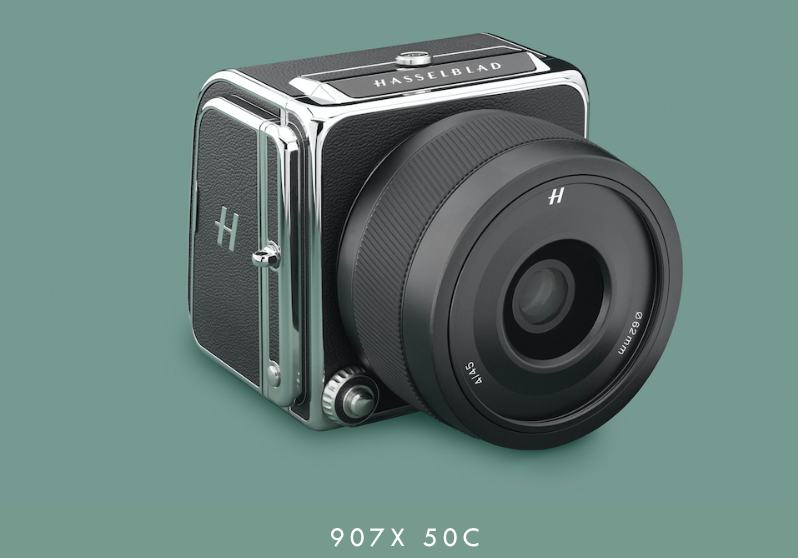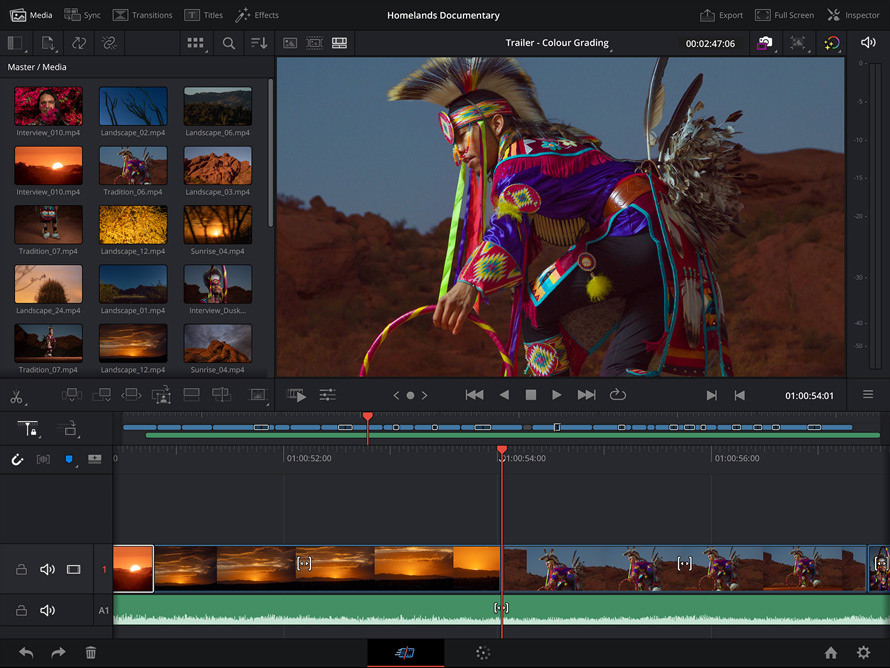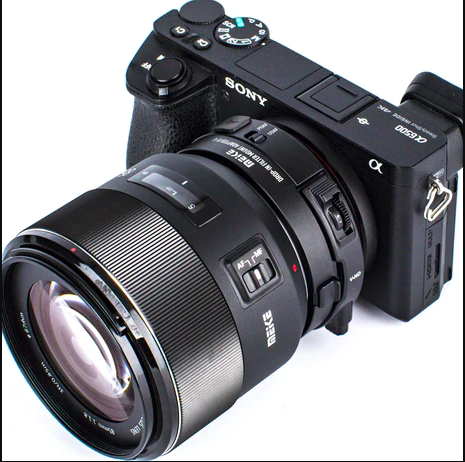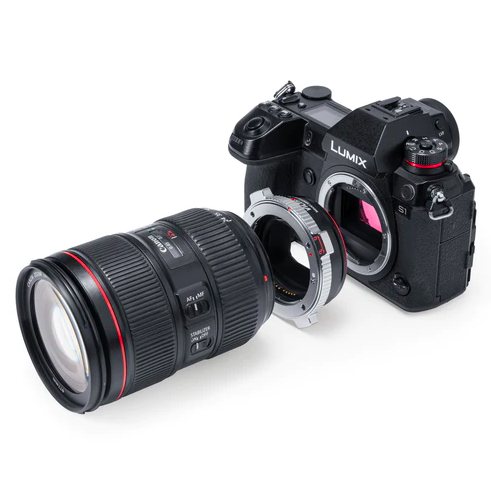-
Posts
6,076 -
Joined
-
Last visited
Content Type
Profiles
Forums
Articles
Everything posted by BTM_Pix
-
The internal 4K60 is, like the 8K mode, a 1.24x crop so expect something similar for external but it remains to be seen.
-
From my perspective of growing up as a kid in the late 60s/early 70s in the UK, the whole thing bemuses me ! It is now a fairly big deal in the UK too - although it hasn't quite become as ingrained in our national culture as changing Prime Minister every few weeks has - but it certainly wasn't the case until relatively recently. Our halloween consisted of three elements, all of which consisted of some sort of fruit or vegetable and an element of borderline abuse. The first was what was referred to where we lived as duck apple but was called bobbing for apples in other parts of the country. This consisted of about a dozen or so apples being put in a bucket of water, having your hands tied behind your back and putting your head in the water to retrieve one with your mouth. Putting your head in the water is a euphemism for one of your brothers repeatedly pushing your head in and holding it down until you'd completed the mission. Fair play to them, the skill involved in holding someone's head down in the water until just prior to the point of drowning was quite an art. Hidden amongst the selection of apples were ones that had had a small incision made in them by my Dad to secrete a coin but the downside to this triumph was that if you managed to survive the drowning attempts to emerge with one of these prizes you then had to eat the apple to claim the coin. These weren't your fancy dan French Golden Delicious apples, though, as these were the tartest inedible cooking apples that a 1970s UK grocer could provide so it was very much a pyrrhic victory. The second element of the 1970s halloween in our house, retained the cooking apples and the hands tied behind the back aspect but added a new one in the form of a blindfold. You were placed in a chair, bound and blindfolded, and you had to try and catch in your teeth whatever was swung past you on a piece of string and weren't allowed to leave the chair until you'd caught something. The "somethings" on offer were one of the leftover apples from the previous fun and games and a bar of soap. It was considered against the spirit of the game to not take a fulsome bite attempt at whatever wafted past so half hearted attempts were strongly discouraged using the clip around the back of the head school of correction. In an act of unexpected generosity, all of the leftover apples were loaded with a coin this time but the same rules applied regarding eating it whereas with the soap you were at least allowed to get away with just the initial bite. Either way, you weren't going to get away unscathed in the disgusting taste department. We may have grown up on the shores of Liverpool Bay but with the blindfolds, hand bindings and forced water immersion techniques our house was very much more Guantanamo Bay at halloween in those days. The final element is the one which most closely resembles the modern version of halloween in the UK, namely the carved lantern. Now, I'm reliably informed that pumpkins were introduced into the UK in the 16th century but let me assure you that in our local shops in the 1970s you'd have been as likely to come across pheasant or quinoa as you were to encounter a pumpkin so our lantern base of choice was the turnip. Due to its density, trying to hollow out a raw turnip and carve a face into it is something that should realistically only be attempted with the aid of power tools. The potential dangers offered by us using the one sharp knife we owned and its main role (carving the Sunday roast) being a protected occupation meant that we had to make do with regular table knives and a spoon. The process could be measured in days rather than hours which, combined with the rudimentary tools on offer, would inevitably lead to the adoption of the "fuck it, that will have to do" approach to fit and finish that is evident in this typical effort from the period. As for interior illumination of the lantern, again, if tealight candles were available in the UK at that time they certainly weren't available in our local shops so it was the workmanlike though more inherently dangerous standard candle that had to be put in them. As these never fit properly into whatever mounting hole that could be fashioned with a spoon, they would inevitably fall over and the smell of burning turnip was a constant in the atmosphere of the UK for the last week of October. Or every Sunday with my mother's propensity to burn the Sunday dinner. The nadir of the grim lantern years was 1973 when we didn't even have the candles as there was a shortage of them as people prepared for the power cuts of the impending three day week where frivolity of using candles for turnip illumination gave way to having to use them for illuminating offices as seen here. As regards, scary halloween movies, we didn't have any that come to mind but, truth be told, we were pretty much living in one anyway! Things are very different now and it does appear to be on its way to being on a par with what happens in the US but for my era it was completely overshadowed by Bonfire Night a few days later. Bonfire Night in the 70s took the danger levels of halloween to another level but as it was in honour of chaotic and ultimately doomed plots at the Palace of Westminster then it was actually very much on brand for the modern day life in the UK.
-
Apologies for going a bit off topic here as this post doesn't relate to Gerald Undone directly but Atomos are releasing a firmware update in the new year for the Ninja V/V+ to record 16 bit RAW output of the A7RV to ProRes RAW.
-
On a purely aesthetic level, the 907x had me in much the same position. Looking at that pic again, it might still have me ! I'm downloading this v3 as I did with v2 just to be on the safe side in case they don't prevail ! The exciting thing is if Nikon do win they can get the internal RAW into their lower tier cameras pretty pronto. Canon have really dropped a bollock with the 3rd party lens and adapter stuff too as who knows when they could just switch them all off. I'm not going to get all crazy and sell the 200 that I've already got 😉 I'd likely not part with the Fp even if I was. The EVF is on the Japan list. Which is code for " I'll likely get a used Fp-L there while I'm at it too as the EVF is bundled in and I can shamelessly claim to have 'saved money' ". Might not be such an easy purchase there actually as whilst the rest of the world is largely underwhelmed by the Fp/Fp-L it is very much a beloved piece in Japan.
-
Its got enough about it to be the 201st and last one. Certainly has for me. As addicts, we often joke about a forever camera but to be honest I've actually reached that point where I am genuinely going to make the next one be the last one. I've not been in any rush so I've been hanging on waiting for Japan to re-open its borders so I could get this mythical forever camera on my next trip and for quite a while I thought it was going to be the GFX100S but the longer the closure has gone on then the more the Z9 has become the one I'm after. In September last year I'd booked a trip for October this year but it was too early for the re-opening by about a week so had to be cancelled and I'm now looking to go in September 23, at which point they should be in stock there and hopefully even available used to save a bit more money. They are currently around £3.4K new there versus £5.3K and as I'm no rush I'll certainly hold off for that sort of saving. The Z9 makes the most sense for me out of the new era cameras as I've got a large collection of F mounts to use with it but even so, particularly with this latest upgrade, even if I had to buy a few Z mount lenses I can't imagine needing anything more than this camera offers. Well, except for some talent of course.
-
Nikon have released another firmware upgrade for the Z9. V3.0 offers what appears to be the equivalent of the JVC LS300 virtual zoom functions, 60fps stills, improved flicker reduction and bluetooth timecode. Full details here : https://www.nikonusa.com/en/nikon-products/mirrorless-cameras/firmware-updates/index.page So another great update for a camera that is so rarely sighted that it wouldn't surprise me if you have to send it in to their Bermuda Triangle service centre where the upgrade will be performed by the Loch Ness Monster and her assistant Big Foot.
-
Existing thread created whilst I was typing this. Ignore
-

Deciding closest modern camera to Digital Bolex look
BTM_Pix replied to Andrew Reid's topic in Cameras
Yeah, I've always had a bit of a hankering to have a go with the Production Camera but never quite had the purchase impulse intersect with the price at the right time ! Not every piece that I've seen posted with it has been fantastic, of course, because no camera ever has that but I've always felt that is has one of the higher wow to meh ratios of any camera. That is quite likely to be related to the skill of people who are using them, of course, as it is has always been quite niche anyway and obviously not without its quirks that have to be worked around. But 4K RAW, ProRes, cheap media and global shutter makes it a really appealing option at the £600-700 they can be had for. Form factor leaves a lot be desired though. -
I find sticking to the Cut page and using the SpeedEditor controller is the way to go. Really speeds the basic assembly and keeps you away from falling down the fannying about rabbit hole until the last minute and treating that as a final process. Hopefully it will work with the new iPad version as it is BLE as well as USB-C. Usually find them sub €200 on eBay (without Resolve included) and they are a bargain for what they bring to the process.
-
Not sure if its available from launch but Resolve is coming to the new M2 powered iPad Pro. No indication of how fully featured it will be compared to the desktop version (the Cut and Colour pages are illustrated as being available in this screenshot) or price or codec support etc but it will be interesting to see nonetheless. It will actually have to go some to compete with LumaFusion which is the current state of the art for the iPad and which has been becoming ever more feature laden over the past couple of years. LumaFusion has actually had an FCPX export option for a while (and is very much an app favoured by Apple in their marketing and presentations) so I'm curious about why Apple are now putting Resolve front and centre in their announcement when it will presumably offer the same functionality for a rival desktop editing system to their own. Irrespective, these new iPads are further blurring the lines between desktop and tablets for content creation whether one is mobile or not. Full details of the new iPads here : https://www.apple.com/uk/ipad-pro/
-
Difficult to be definitive as there will be variances in camera and lens but, in my experience, EF to E is the most reliable converter type for AF (outside of the native DSLR to Mirrorless adapters from Canon and Nikon obviously). It also makes a cheaper introduction to first time E mount camera owners coming from an EF based/adapted system. Outside of AF, the appeal of this for me would be as an intermediate adapter with ND for Y/C, Leica M and Nikon F mounts.
-
About the camera though... Good news for all E-mount owners in general but very relevant for the FX30 is that Meike have announced an EF to E mount version of their drop in variable ND adapter. Turns the FX30 (or FX3 if you want full frame) into a very compact Cinecorder for $199 https://meikeglobal.com/products/mk-efte-c?variant=43529048326372
-
Obviously, there are no words in this situation so all I can say is take your time and stay strong for Zara and your Mum. All the best.
-
That is the power specification for the USB-C charging input. The IS and IEC numbers indícate conformity of the battery for fire safety and battery charging standards. The R code is the registration with the Bureau of Indian Standards who run conformity assessment schemes.
-
Just as an FYI, as the user just banned on here had listed an FX6 amongst other scam listings, it does seem to be a camera on Ebay that is particularly appealing to scammers. If you search for the FX6 under completed listings like this link then there are some very suspicious prices. https://www.ebay.com/sch/i.html?_nkw=sony+fx6&_in_kw=1&_ex_kw=&_sacat=0&LH_Complete=1&_udlo=&_udhi=&_samilow=&_samihi=&_sadis=15&_stpos=&_sargn=-1%26saslc%3D1&_salic=1&_sop=12&_dmd=1&_ipg=60
-
Exactly the same for all of this user's other items that have been listed for sale on here. One for @Andrew Reid to have a look at as the entire posting history of this user is made up of these ads with photos lifted from eBay. Oh except for the one that poses this question : "Is it possible to hack into Samsung and check if NX2 is going to be released? Any thought would be appreciated"
-
And as if by magic, Viltrox have now released one 😉 https://viltroxstore.com/products/viltrox-ef-l-mount-adapter-with-positive-lock-for-ef-ef-s-lens-to-l-mount-cameras
-
They bought Fairchild (original BM cameras) and Truesense/Kodak (Digital Bolex) too but the lineage of the Arri stuff is definitely from Cypress as both the D-20 and the Alexa had a Cypress sensor https://web.archive.org/web/20101230013456/http://www.businesswire.com/news/home/20101220005251/en/Cypress’s-Industry-Leading-CMOS-Image-Sensor-Portfolio-Designed Its a bit of stretch for that press release to be claiming those were jointly developed with onsemi as they didn't actually buy the sensor division of Cypress (which was predominantly FillFactory who Cypress themselves had acquired previously) until a year after the Alexa had been released and six years after the D-20 was released. In that respect, its a bit like BMW claiming they developed the original Mini Cooper because they now own the company that did. FillFactory were based in Mechelen in Belgium and as onsemi offer CMOS hardware design jobs listed at the same site then I suspect that, as with the previous cameras, the current Arri sensors are still physically being developed in Belgium rather than the US, albeit with funding from the US parent company of course. https://onsemi.dejobs.org/mechelen-bel/hardware-design-engineer/1025F288A9BF4AC584B993271B8E9BC2/job/
-
No, no, no, not at all. Its just a covincidence 🙂
-
Well...I, erm, might have a couple more. X, F, EF-M. In my defence, I am pretty old and don't like to throw anything away. I haven't been in a camera shop since March 2020 which I think that qualifies me for some sort of chip from Cameraholics Anonymous.
-
All of the cameras that I already own ? Pocket6K, Sony A7Sii, Sigma FP, JVC LS300 and (at some point) the Nikon Z9 to name an example from each mount. Which I own. Why would I want to adapt it and lose the ability to quickly use native EF and EF-S lenses with IS, aperture control and, in my case with the AFX, full autofocus ? I can do the latter with the AFX and motors which is fine but I'd do that anyway with the adapter. If it was a quick swap to go between PL and EF like my RED which is four bolts then fair enough but that mod for the P6K is not something you'd be wanting to do every day, let alone on the go. I don't live in the US though. Here in Europe, they are €150 and I'd need five of them, hence €750. https://www.amazon.es/Fotodiox-Pro-Adaptador-Compatible-Positivo/dp/B07VZNSCCZ I don't disagree about the locking mount but by far the biggest issues I have using focus motors with EF (or any other mount) stills lenses is with ill fitting gear rings and not using a lens support on the rods. With a cine lens like these then the gear rings aren't an issue and as the absence of the lens support also causes issues on my native PL cine lenses on my native PL camera then I would use one irrespective. I keep stressing in this that for me personally the EF mount is the more appropriate because I have different needs in terms of having it on different cameras but I recognise that if the majority of its use would be on a PL camera in that environment then I'd go with the PL version.
-
Synth reviewers on YouTube are plagued by copyright strikes when they demonstrate filter sweeps as someone has managed to convince the YouTube content review clowns that they own the copyright to the sound of a filter sweep. If I could convince YouTube that I own the copyright to the phrases "Hey, whats up, its your boy..", "with that being said", "lets get into it" and "I have been sent this for free but..." then I'd be rolling in it.
-
True as you can adapt PL to all of them. The adapters are considerably more expensive of course but unless you’ve got a few lenses and a couple of different body types then that wouldn’t be a massive issue. For me personally I’d want to use them on a native EF mount, E mount, L mount, MFT and likely soon Z mount cameras. Even using the cheap and cheerful Fotiodiox PL adapters that would be around €750 to bring that versatility whereas, because these are manual lenses and so only need the dumb adapters, it would be around €80 to adapt the EF version. I do have a PL mount camera but it has a swappable EF mount (as does the only other cinema camera I would envisage buying) so, for me personally, the EF still wins. Of course if someone envisages getting a PL mount camera without an interchangeable mount down the way then all bets are off !
-
Sorry, yes, I was keeping my comments in reference to the Mini. From the HD model upwards, there is a Holdout Matte input. There is an 80% price jump from the Mini to the HD though so it increases the cost of a multi camera setup considerably but it is still very good value for money for anyone needing the facility. With some thought, dual background and foreground elements could be coaxed out of Unreal.



